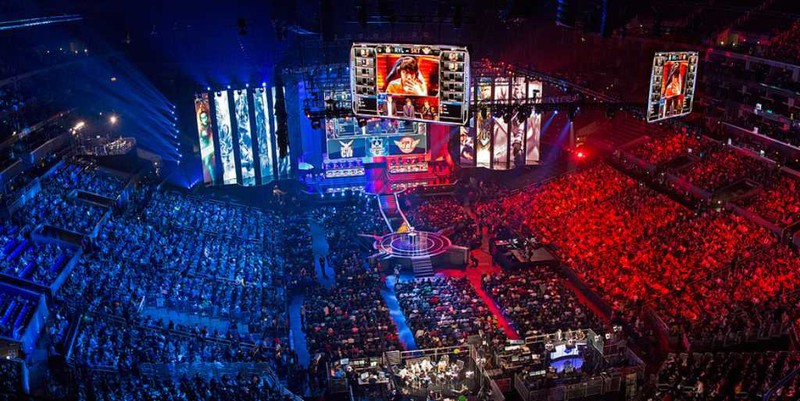Activision Blizzard has been extremely busy these past few weeks. It held its Investor’s Day meeting today, just before opening of BlizzCon 2015, amid the launch of Call of Duty: Black Ops III, and is still fresh from the recent $5.9 billion purchase of King Digital Entertainment earlier this week. Not to mention the recent announcement of ex-ESPN CEO Steve Bornstein and Major League Gaming founder Mike Sepso will be leading the new Media Network Division for promoting eSports.
If there’s one thing to take away from the investor meeting, it’s that Activision Blizzard is one of the biggest entertainment giants in the video game industry, and eSports is the key to growing even further.
Gio Hunt, Executive Vice President of Corporate Operations at Blizzard Entertainment, spoke to how Blizzard has always been at the epicenter of the eSports phenomenon; which shouldn’t be surprising, considering how the StarCraft franchise pioneered eSports 15 years ago. The key to Blizzard’s success and rapid growth over the past five years has a lot to do with its dedication to quality, mass appeal and the accessibility of its games across multiple platforms such as PC, console, tablet and mobile phones.
Last April, Blizzard hosted a March-madness style event for called Heroes of the Dorm, featuring the free-to-play game Heroes of the Storm. Its live finals were televised on ESPN2, which marked the first time a collegiate eSport has ever been televised, and brought the world of eSports into the mainstream.
Now, between hit games like StarCraft II (which has a new game launching next week), Heroes of the Storm, Hearthstone, and next year’s competitive shooter Overwatch, Blizzard will offer more eSports than ever. Hearthstone in particular has brought has made eSport competitions to mobile. At BlizzCon, finalists from around the world are competing for cash prizes across various games, making it the single biggest Blizzard eSports event around. Add in offerings from the Activision side, like like the Call of Duty franchise, and it becomes clear why a new eSports division was created.
Steve Bornstein, the new Chairman of Activision Blizzard Media Network Division, will be helping Activision Blizzard “maintain its leading role in eSports.” eSports currently has over 100 million unique viewers, which is an audience that’s “larger than most major sports, and will grow to be bigger than all of them.” Conservative estimates indicate that eSports will grow to 300 million viewers by 2017, and bring in one billion in revenue by 2018.
“Stick and ball sports have decades of professionally produced content, and live events that attract millions of fans, and billions of dollars,” Bornstein notes. “Much money is being spent by sponsors and advertisers. They have players who have become heroes. All of this is ahead for eSports.”
Mike Sepso, Senior Vice President for the Media Network Division, adds that the goal is to “broaden reach, drive higher engagement, earn player investment, and make franchises stronger” by combining “the best of traditional sports and eSports to lead the eSports phenomenon into the mainstream.”
In the past 12 months, people spent almost 1.5 billion hours watching Activision Blizzard games streamed. The games themselves were played for 14 billion hours. Data shows that eSports spectators are more engaged, and will spend twice as much on peripherals, and 30 percent more on hardware and software than players that don’t watch. These huge audience numbers mean mainstream, traditional sports, sized opportunities.
However, Sepso also points out that, “while the size, energy and engagement of fans surpasses that of some of the biggest professional sports in the world, the level of earned investment has a long way to go.” The four U.S. sports leagues bring in $29 billion in revenue against 1.4 billion viewers, which comes to an average of $21 per viewer. In comparison, eSports viewership, with its 100 million viewers, generates $200 million, which comes out to $2 per person.
Activision Blizzard, with iconic franchises that engage 70 million users a month, is in the unique position to drive eSports into the mainstream. The Call of Duty franchise alone already has professional broadcast tools built-in so that audiences can see players around corners or behind walls, similar to how a viewer can see the yellow first down marker on an NFL broadcast.
Media Networks Division will focus on driving new audiences, explore new distribution channels, and strive to increase value to fans, partners and advertisers. It’s three pillar strategy is to:
- Create new premium, accessible, eSports content that celebrates players and increases the quality of content already being producing to reach a wide audience.
- Help organize the eSports ecosystem and the data that flows from competition using proven sports models that provide the most value to players fans and partners.
- Explore and expand distribution with current and new partners, while experimenting and innovating Activsion Blizzard’s own platforms.
Sepso concludes by stating how “eSports is becoming a cultural phenomenon. It looks like established sports, it has a passionate global fanbase.” Now Activision Blizzard has some of the most popular competitive games around, “and a leadership team in place to help lead the industry and company to a sustainable growth through eSports.”

